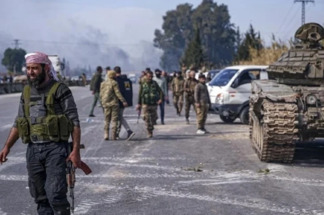-
Iran: Regime on an economic tightrope with a budget that doesn’t balance
On 2 December 2020 the Iranian president, Hassan Rouhani, presented the year 1400 (Persian calendar) budget to the parliament, to be reviewed and considered. Debate over the government's budget and revenue sources had already begun prior to the presentation of the budget itself. The government has aligned next year's budget based on anticipation of increased oil exports; this will only be achieved if an agreement is reached with the United States.
Presenting the latest budget for his presidency, Rouhani said that the government's budget bill was drafted assuming that sanctions remain in place, the current US government policies regarding Iran continue, and that most of the expenditures in this budget would rely on revenues other than the sale of oil and derivatives. The budget, which was posted on Iran's Program and Budget Organization website an hour later, does not endorse Rouhani's remarks and assurances.
The government, in compiling this budget, has raised the overall budget ceiling by around 400 thousand billion tomans (Iranian currency) from last year. Last year the government had set the resources and expenditures at 2,026 thousand billion Tomans, which has increased to 2,435 thousand billion Tomans in next year’s budget. Of this amount, 929.8 thousand billion Tomans go to the country's general budget, and 1,562 thousand billion Tomans is allocated to state-owned companies, non-profit institutions affiliated to the government and banks. The bill is slightly expansionary in the general budget sector and contractionary in the sector related to state-owned companies and banks. In other words, comparing the total public budget of last year with the coming year, we see that the government has assumed at least 48% annual inflation and has included it in the growth of the country's public expenditures for the next year. But in the revenues and expenditures of state-owned companies and banks, only 8% growth is being considered. It seems that next year if the government achieves 100% of its income, it will pay more attention to the public expenses of the country than its privately owned entities affiliated with the government.
But to see how Rouhani has assessed next year's oil sales, one may need to have a more detailed look into the revenue from oil and oil derivatives sales. In the annual budget, the resources from the sale of oil are included under the heading "Government public resources from the place of transfer of capital assets". In this sector and based on what is stated in the first part of the budget, the government is assuming 252 thousand billion tomans from oil revenues. In other words, from a total of 841 trillion tomans expenditures of the public administration (expenditures without dedicated revenue), about 35% of it depends on the fate of oil barrels. But when we convert 252 thousand billion tomans into dollars and the number of barrels needing to be sold, we may understand the government's dilemma regarding optimism or pessimism about foreign developments.
Although the government budgeted for about 54 thousand billion tomans of oil revenue for the first six months of this year, in reality it was only able to sell 27 thousand billion tomans of oil. Next year, the government has considered its dollar revenues at an optimistic conversion rate of 11,500 tomans per US dollar. Another variable in calculating total oil revenue is the base rate per barrel of oil based on the Ministry of Oil estimates. This oil revenue in the budget is based on an also optimistic $40.00 US a barrel.
Now that we have all the numbers, we can come to a conclusion that shows the nature of this budget. The government forecasts sales of 2.3 million barrels of oil per day for next year, to fulfil its 252 thousand billion tomans oil revenue goal. Meanwhile, in this year's budget, the share of oil revenue is 107 thousand billion tomans. The figure of 107 thousand billion tomans was predicted based on the daily sales of 1.1 million barrels of oil, which, of course, in the first half of this year and taking the best possible estimate, was underachieved as Iran was only able to sell 500,000 barrels of oil per day. In other words, although the government should have had about 54 thousand billion tomans of oil revenue for the first six months of this year, in practice, it was only able to sell the 27 thousand billion tomans worth.
The government must be able to sell 1.6 million barrels of oil per day in the second half of the year to make up for the budget deficit caused by declining oil sales in the first half of the year. This scenario will definitely not happen because there are at least 30 days left until a possible government change in the United States.
But, suppose we assume that by January 20, when Biden takes office, Iran's current oil revenues continue, and Biden will suspend Iran's oil sanctions on the same day as his inauguration. In that case, Iran will hope to sell 3 million barrels per day in February and March to offset this year's budget deficit. In other words, contrary to what the government claims, Iran is eagerly waiting for Trump to leave and for its oil to be sold and for sanctions to be lifted. If the oil sanctions are not lifted in the Biden administration or the suspension of sanctions is subject to negotiations that will probably last more than a year, like the previous agreement with Iran, they will have a revenue deficit of around 198 thousand billion tomans next year, just from the non-realization of oil revenues. Naturally, this budget deficit will lead to higher prices for the people and more poverty. Presently, more than 60% of Iranians live below the absolute poverty line, and with next year's budget, this percentage would be expected to increase further. But the consequences of this budget deficit do not end here and, rather than accepting further grinding poverty, we will surely see the reaction and anger of more people and in the form of uprisings of the type of November 2019, which ignited with the increase in gasoline prices and spread in more than 100 cities in a short period of time, and, of course, this time may lead to the overthrow of Khamenei.
You May Also Like
Popular Posts
Caricature
BENEFIT Sponsors BuildHer...
- April 23, 2025
BENEFIT, the Kingdom’s innovator and leading company in Fintech and electronic financial transactions service, has sponsored the BuildHer CityHack 2025 Hackathon, a two-day event spearheaded by the College of Engineering and Technology at the Royal University for Women (RUW).
Aimed at secondary school students, the event brought together a distinguished group of academic professionals and technology experts to mentor and inspire young participants.
More than 100 high school students from across the Kingdom of Bahrain took part in the hackathon, which featured an intensive programme of training workshops and hands-on sessions. These activities were tailored to enhance participants’ critical thinking, collaborative problem-solving, and team-building capabilities, while also encouraging the development of practical and sustainable solutions to contemporary challenges using modern technological tools.
BENEFIT’s Chief Executive Mr. Abdulwahed AlJanahi, commented: “Our support for this educational hackathon reflects our long-term strategic vision to nurture the talents of emerging national youth and empower the next generation of accomplished female leaders in technology. By fostering creativity and innovation, we aim to contribute meaningfully to Bahrain’s comprehensive development goals and align with the aspirations outlined in the Kingdom’s Vision 2030—an ambition in which BENEFIT plays a central role.”
Professor Riyadh Yousif Hamzah, President of the Royal University for Women, commented: “This initiative reflects our commitment to advancing women in STEM fields. We're cultivating a generation of creative, solution-driven female leaders who will drive national development. Our partnership with BENEFIT exemplifies the powerful synergy between academia and private sector in supporting educational innovation.”
Hanan Abdulla Hasan, Senior Manager, PR & Communication at BENEFIT, said: “We are honoured to collaborate with RUW in supporting this remarkable technology-focused event. It highlights our commitment to social responsibility, and our ongoing efforts to enhance the digital and innovation capabilities of young Bahraini women and foster their ability to harness technological tools in the service of a smarter, more sustainable future.”
For his part, Dr. Humam ElAgha, Acting Dean of the College of Engineering and Technology at the University, said: “BuildHer CityHack 2025 embodies our hands-on approach to education. By tackling real-world problems through creative thinking and sustainable solutions, we're preparing women to thrive in the knowledge economy – a cornerstone of the University's vision.”
opinion
Report
ads
Newsletter
Subscribe to our mailing list to get the new updates!






















